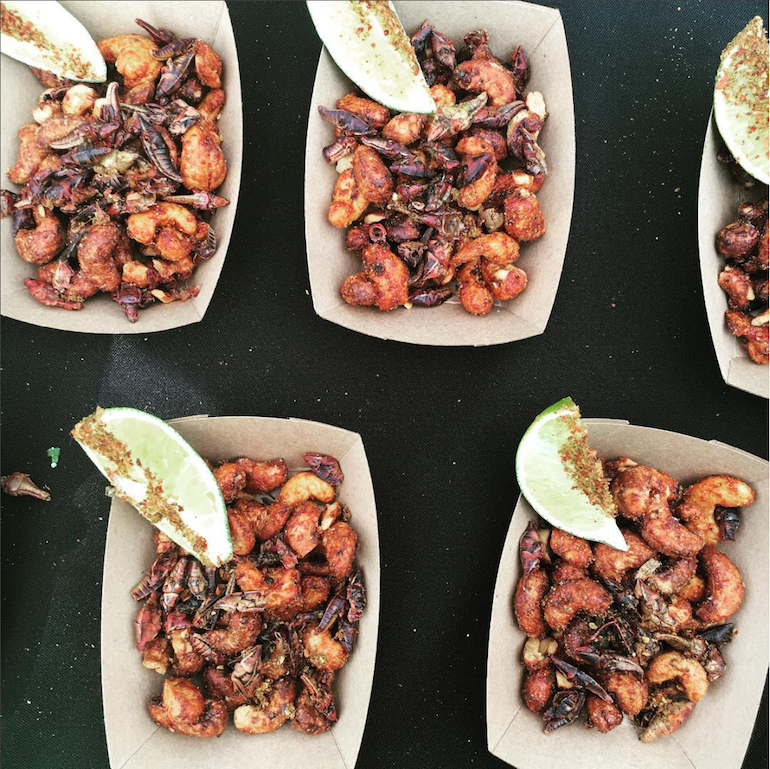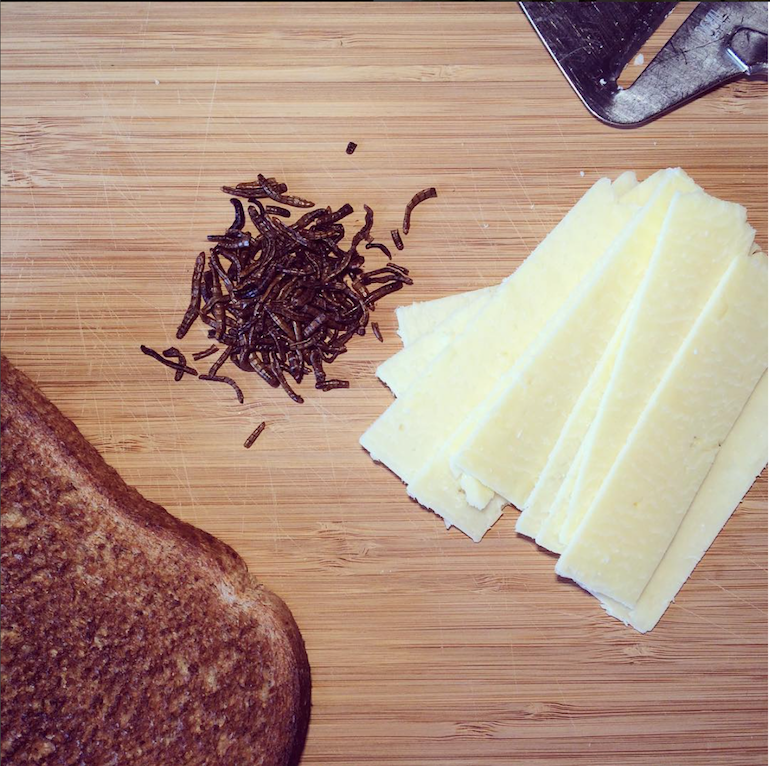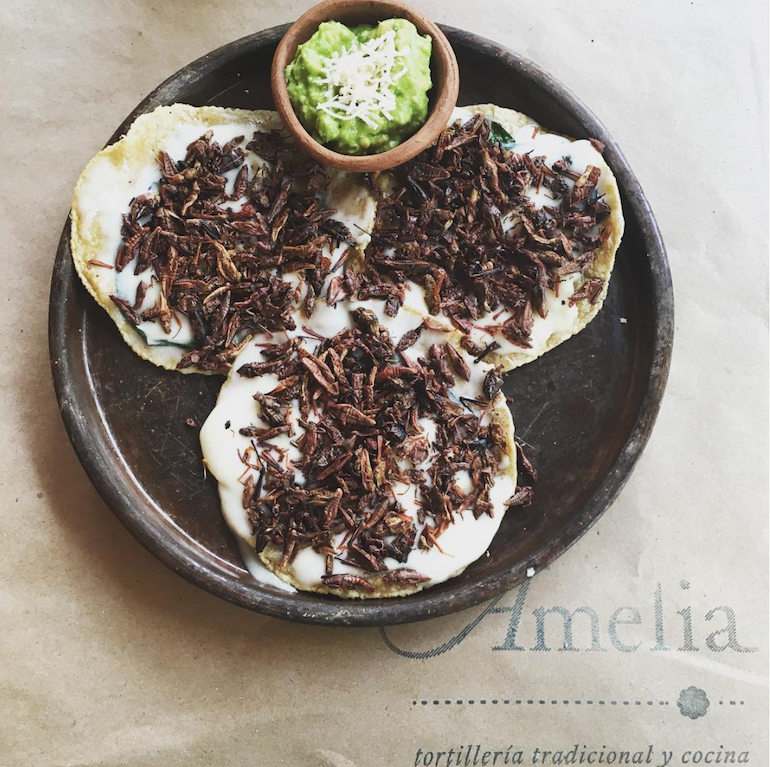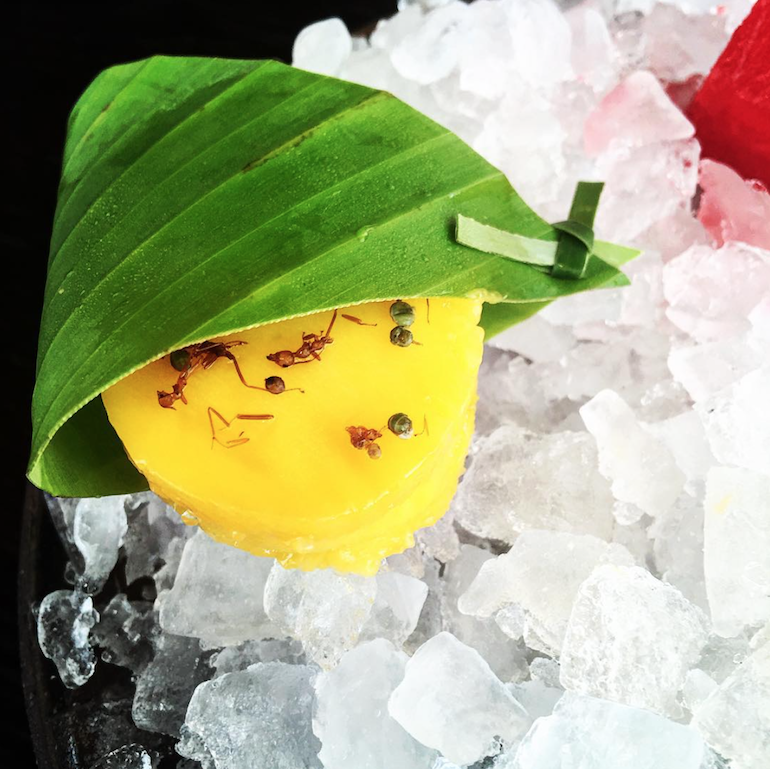I’d like to consider myself an adventurous eater. My overly-competitive nature always begs me to have the title of the most adventurous eater amongst my friends. As a result, a few summers ago, I found myself consuming all sorts of edible insects to prove this point to two of my friends who also claimed to be the most adventurous eater.

GIF courtesy of giphy.com
It was not until later that I realized the ever-growing popularity of eating insects. Nearly 80% of the world considers eating insects the norm. Not only can they be delicious, but they can also pack a ton of nutritional benefits into a small, sustainable, and affordable package.
With over 1,900 varieties edible insects to choose from, it would be impossible to talk about them all. Therefore, I’ll highlight a few of the most commonly eaten insects.
1. Crickets

Photo courtesy of @dfreehug on Instagram
Crickets are typically eaten fried and covered in seasoning. They contain as much protein as beef with less calories and fat per serving, and contain high levels of zinc and vitamin B12.
2. Worms

Photo courtesy of @cornishfoodbaby on Instagram
Mealworms are not actually worms, rather the larva of the mealworm beetle. Nonetheless, they contain high levels of protein and can be processed in mass quantity with a small ecological footprint. Raising and harvesting insects is more energy-efficient and expels less greenhouse gasses than traditional livestock farming.
3. Grasshoppers

Photo courtesy of @designger on Instagram
Grasshoppers are widely harvested across the world and are a great source of protein and calcium. Moreover, a variety known as Chapulines are harvested as a source of food and income as an alternative to using pesticides. They’re then commonly prepared with a sprinkle of chili and a squeeze of lime.
4. Ants

Photo courtesy of @sweetlui on Instagram
Ants are high in calcium, protein, and iron. One serving of ants, 100g, can pack up to 14g of protein and almost 38g of calcium.
5. Palm Grubs

Photo courtesy of @timdlatta on Instagram
Palm grubs are eaten mainly in South East Asia and are known for their energy-boosting capabilities.
Future Trends

Photo courtesy of @chapulrevolution on Instagram
America may not be lining up in hordes to eat the latest insect infused dish yet. However, in the past few years, companies and farms like C-Fu, Tiny Farms, and Chapul have been coming up with innovative ways to integrate edible insects into food items that will garner mainstream appeal. In 2013, The U.N. Food and Agriculture Organization even published a report encouraging more humans to consume these insects to feed the increasingly growing population.
I encourage all of you to set aside your fears and try some delicious edible insects. Who knows? These low-calorie, high-protein, affordable insects could be your new favorite snack. Remember, don’t swat it ’til you try it!



